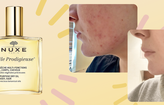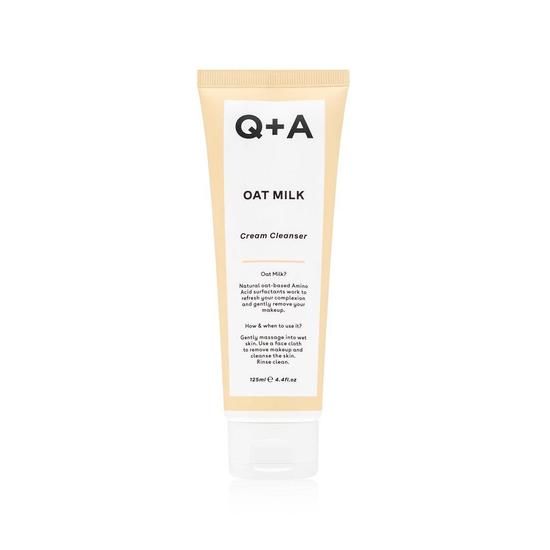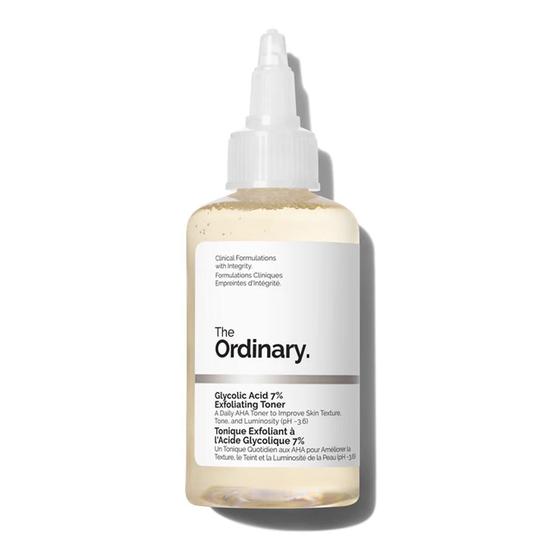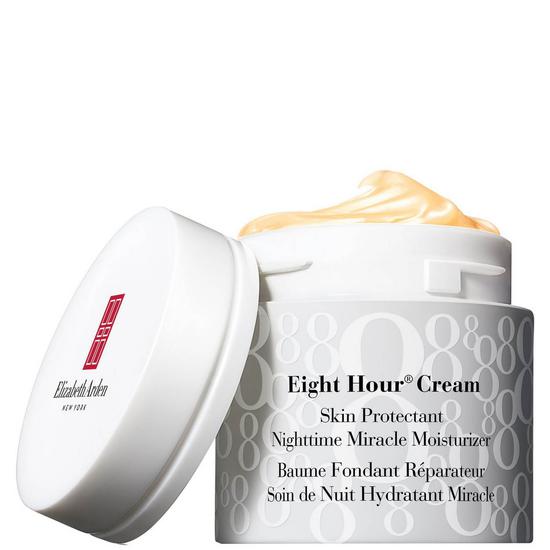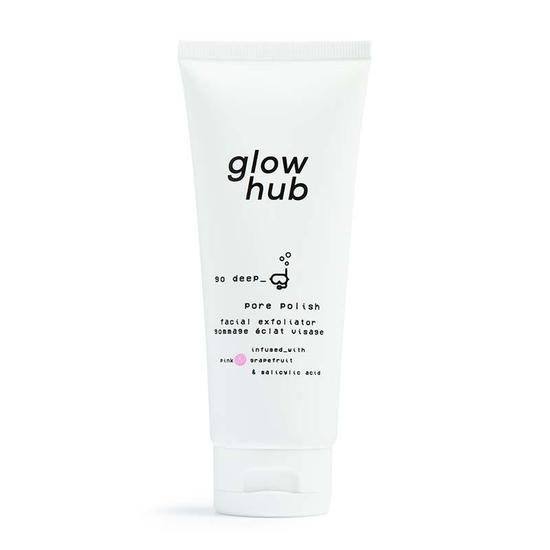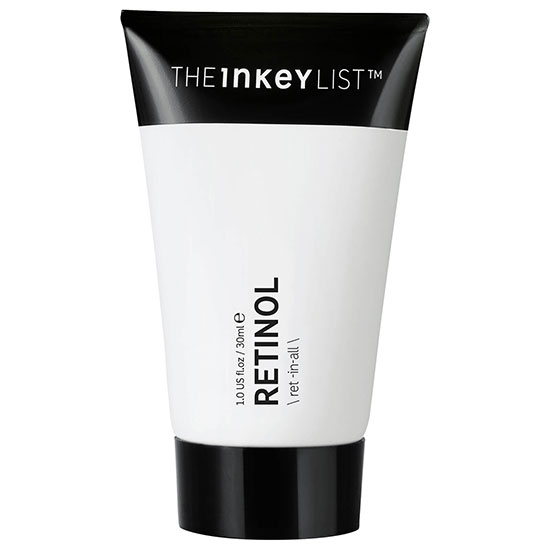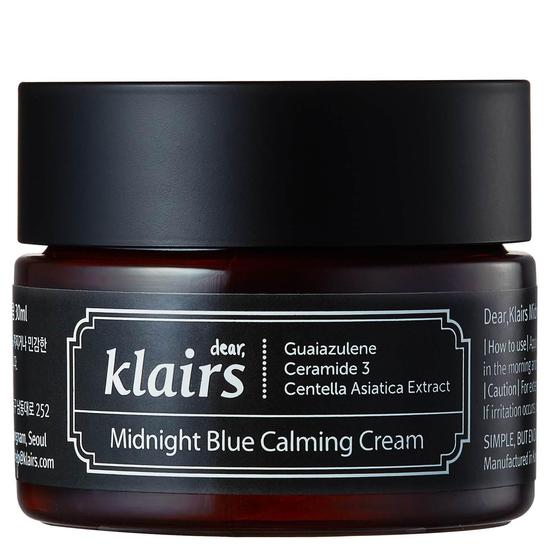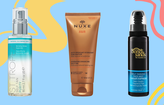
- Skin
- Glycolic Acid With Retinol
Can You Use Glycolic Acid With Retinol?
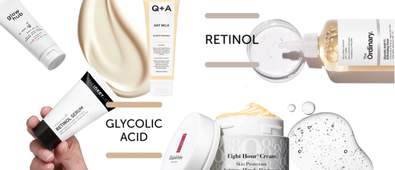
Can You Use Glycolic Acid With Retinol?
Usually Not Together—Alternate Instead
Glycolic acid and retinol are both exfoliating powerhouses, but using them at the same time is typically too harsh for most skin types. Glycolic acid dissolves dead skin cells on the surface, while retinol promotes deeper cellular turnover—combine them without a buffer, and you risk irritation or barrier damage.
That said, alternating them across your routine (e.g. glycolic on Mondays, retinol on Tuesdays) can give you the benefits of both without overwhelming your skin.
👉 Want the benefits of both? Jump to how to alternate glycolic acid and retinol safely.
What Does Glycolic Acid Do For Skin?
Glycolic acid is a widely used alpha-hydroxy acid (AHA) that exfoliates the skin by dissolving the bonds between dead skin cells on the surface. Derived from sugarcane, its small molecular size allows it to penetrate deeply and act quickly.
This resurfacing action reveals fresher, smoother skin underneath, improving fine lines, uneven tone, and texture irregularities. Regular use of glycolic acid encourages cell turnover and boosts the efficacy of other products in your skincare routine.
Key Benefits Of Glycolic Acid Include:
- Surface Exfoliation: As an alpha hydroxy acid (AHA), it dissolves the bonds between dead skin cells, revealing fresher skin beneath.
- Boosts Cell Turnover: Encourages regeneration for brighter, healthier-looking skin.
- Reduces Pigmentation: Fades dark spots, melasma, and sun damage for a more even tone.
- Improves Texture: Smooths rough or uneven skin and softens fine lines.
- Enhances Absorption: Prepares the skin to better absorb serums and treatments applied afterward.
- Anti-Ageing Benefits: Visibly improves signs of ageing like dullness, sagging, and wrinkle depth.
(Source: Wikipedia, Cleveland Clinic, Healthline)
Glycolic Acid: Best For Normal, Oily Or Uneven Skin
Oily and Acne-Prone Skin: Exfoliates and decongests clogged pores, improving roughness and tone.
Normal to Dry Skin: Enhances cell renewal but must be paired with hydration to avoid over-drying.
Sensitive Skin: Use with caution. Glycolic can sting—consider milder AHAs like lactic acid if irritation occurs.
Hyperpigmented or Textured Skin: Excellent for fading dark spots and smoothing surface irregularities.
What Does Retinol Do For Skin?
Retinol, a vitamin A derivative, transforms the skin by accelerating cell turnover and increasing collagen production. It tackles a range of concerns—from acne and congestion to fine lines and textural unevenness. Over time, it helps create smoother, more luminous skin with visibly refined pores.
Because of its strength, retinol is considered an advanced ingredient that requires a cautious approach. Side effects like dryness, flaking, and redness are common in the early stages of use, but these can be offset with barrier-repairing or anti-inflammatory ingredients such as niacinamide or azelaic acid. With proper care, retinol can be a cornerstone of an effective routine.
Key Benefits Of Retinol Include:
- Boosts Cell Turnover: Speeds up the rate at which skin renews itself, helping to shed dead cells and reveal smoother, healthier skin beneath.
- Reduces Fine Lines and Wrinkles: Stimulates collagen production, softening the appearance of existing wrinkles and preventing new ones from forming.
- Clears Acne: Helps prevent clogged pores, reduces breakouts, and treats existing blemishes by normalising skin cell behaviour.
- Evens Skin Tone: Fades dark spots, sun damage, and post-acne hyperpigmentation for a more uniform complexion.
- Improves Texture: Refines rough patches and smooths out uneven or bumpy areas with consistent use.
- Enhances Firmness and Elasticity: Promotes collagen and elastin synthesis, helping skin appear firmer and more youthful over time.
(Source: Cleveland Clinic)
Retinol: Powerful But Needs Tailoring By Skin Type
Normal to Dry Skin: Gradually introduce retinol and pair it with hydrating ingredients, such as hyaluronic acid, to reduce dryness and sensitivity.
Oily and Acne-Prone Skin: Highly beneficial due to its exfoliating properties, helping to manage oiliness and reduce blemishes.
Sensitive Skin: Start slowly with a lower concentration, initially applying only a few times a week to minimise irritation. Buffer with moisturiser.
Mature Skin: Great for improving fine lines, firmness and sun damage—build up use slowly for long-term results.
Why Do Glycolic Acid And Retinol Work Well Together (With Care)?
Glycolic acid and retinol are both excellent for refining skin texture, treating acne, and minimising signs of ageing. However, they’re also strong actives that can cause irritation if used together incorrectly.
Glycolic acid, an alpha-hydroxy acid (AHA), exfoliates the top layer of dead skin cells, allowing smoother, more radiant skin to emerge. Retinol works deeper in the skin, increasing cell turnover and stimulating collagen. Together, they offer powerful resurfacing—but also an increased risk of dryness, peeling, or sensitivity if layered without breaks.
If you're looking to benefit from both, it’s best to use them on alternate nights or to space them out in your weekly routine. Hydrating and barrier-supportive products are essential when combining these two.
When Do Glycolic Acid And Retinol Work Well Together?
Glycolic acid and retinol are both excellent for refining skin texture, treating acne, and minimising signs of ageing. However, they’re also strong actives that can cause irritation if used together incorrectly.
Glycolic acid, an alpha-hydroxy acid (AHA), exfoliates the top layer of dead skin cells, allowing smoother, more radiant skin to emerge. Retinol works deeper in the skin, increasing cell turnover and stimulating collagen. Together, they offer powerful resurfacing—but also an increased risk of dryness, peeling, or sensitivity if layered without breaks.
To benefit from both, it’s best to use them on alternate nights or to space them out in your weekly routine. Hydrating and barrier-supportive products are essential when combining these two.
Comparing Glycolic Acid And Retinol Side-By-Side
- Primary function: Glycolic acid – Surface exfoliation | Retinol – Cell turnover and collagen boost
- Reduces fine lines/wrinkles: Glycolic acid ✅ Improves over time | Retinol ✅ Highly effective
- Improves skin texture: Glycolic acid ✅ Refines surface texture | Retinol ✅ Significantly smooths
- Fades hyperpigmentation: Glycolic acid ✅ Fades pigmentation | Retinol ✅ Strongly effective
- Treats acne & blemishes: Glycolic acid ✅ Helps clear pores | Retinol ✅ Effective by unclogging pores
- Enhances skin firmness: Glycolic acid ❌ Minimal firming | Retinol ✅ Boosts collagen, improves elasticity
- Boosts hydration: Glycolic acid ❌ Can dehydrate skin | Retinol ❌ Can cause dryness
- Improves skin barrier: Glycolic acid ⚠️ May sensitise skin | Retinol ❌ May weaken initially
- Potential irritation: Glycolic acid ⚠️ High risk of irritation | Retinol ⚠️ Possible peeling
- Suitable for sensitive skin: Glycolic acid ⚠️ Often too harsh | Retinol ⚠️ Use with caution
Retinol Also Works Well With:
Bakuchiol – A gentler plant-based retinol alternative that can complement retinol’s benefits while reducing potential irritation.
Allantoin – Soothes the skin and promotes healing, helping to reduce flaking and dryness.
Ceramides – Supports barrier repair and reduces the harshness of retinol during early use.
Glycolic Acid Also Works Well With:
Centella Asiatica – Calms inflammation and supports barrier repair after exfoliation.
Ceramides – Helps reinforce the skin’s barrier post-exfoliation to retain hydration and prevent irritation.
Liquorice Root Extract – Fades post-inflammatory pigmentation and evens out tone when paired with glycolic resurfacing.
How To Apply Glycolic Acid And Retinol Together
- Use glycolic acid on alternate nights from retinol—never layer them directly unless prescribed.
- On glycolic acid nights: cleanse, apply acid toner or serum, then follow with hydrating serum and moisturiser.
- On retinol nights: cleanse, apply retinol, wait 5–10 minutes, then moisturise.
- Avoid harsh exfoliants and look for alcohol-free products in between.
- Always apply SPF daily, as both increase skin sensitivity to the sun.
Glycolic Acid Nightly Routine
Retinol Nightly Routine
FAQs
Can glycolic acid and retinol be used together?
Timing is everything. Start slow and introduce one new skincare active at a time. Avoid layering—alternating nights (known by some as skin cycling) is best to protect your skin’s barrier and reduce the risk of over-exfoliation. Always finish with SPF by day.
What are the differences between glycolic acid and retinol?
Glycolic acid (AHA) exfoliates surface dead skin for immediate radiance. Retinol works deeper to stimulate collagen and cell turnover, reducing fine lines. Glycolic acid resurfaces; retinol renews.
Should you moisturise after using either?
These ingredients can dry out the skin, so always finish with a nourishing, barrier-friendly moisturiser.
Have AHAs, BHAs and PHAs got your head in a twirl? Not to worry, here at Cosmetify, we know a thing or two about chemical exfoliants and all The Best Chemical Exfoliators for Soft, Smooth Skin. They're a great addition to your skincare routine—as are oils and serums, so be sure to check out our blog post on Face Oils & Serums: The Ultimate Guide, too.

Written by Maria Mukaranda
Maria’s background is rooted primarily in creative media and a love for all things written, expressed through experience both online and in print; for creative platforms spanning from music to fashion to beauty.
Top Posts

